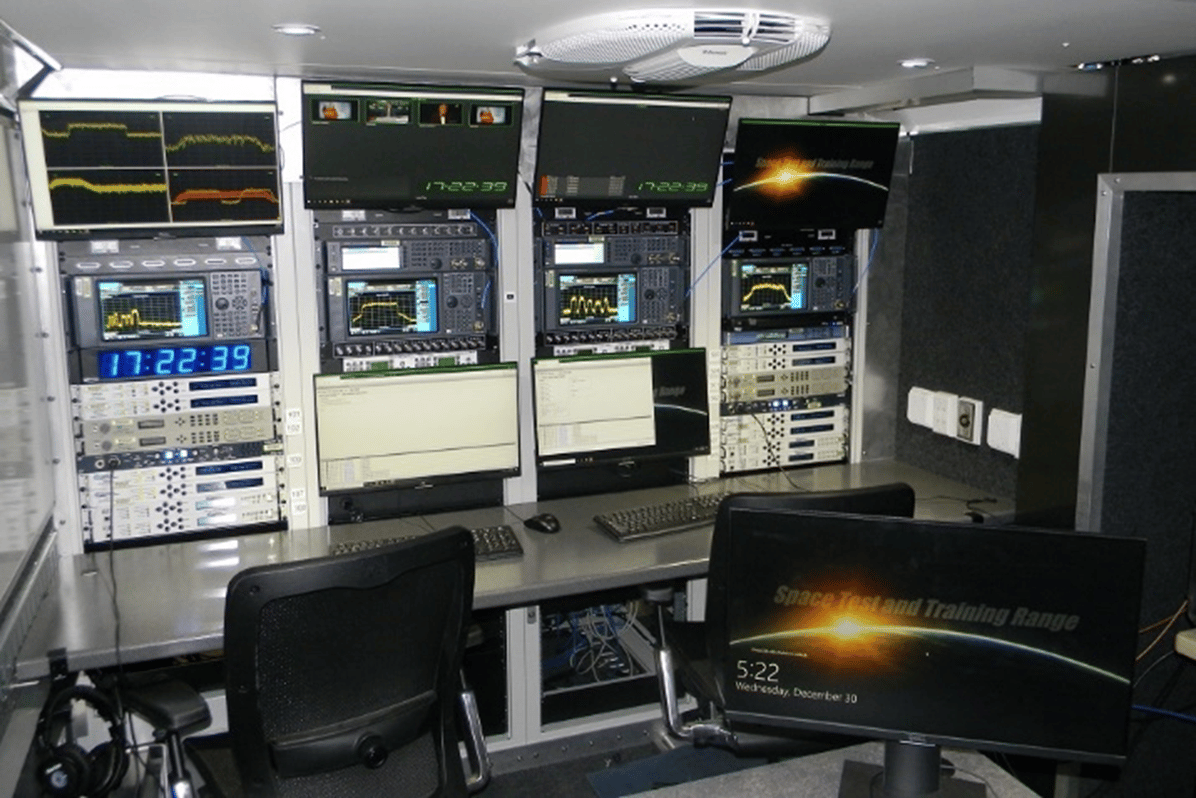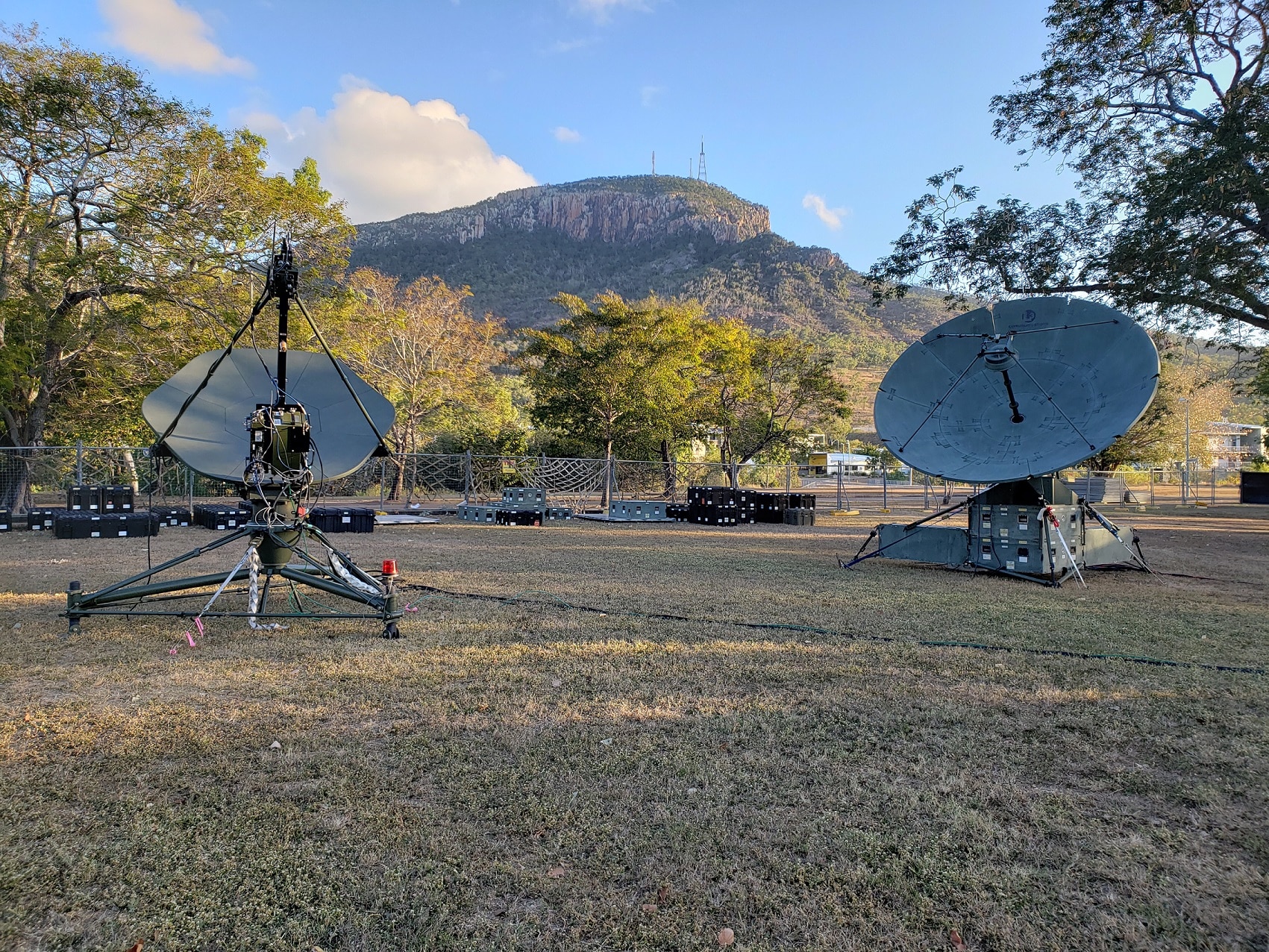The critical role of the Space Test and Training Range** in future combat
**Note: Since the publication of this article, the Space Test and Training Range has changed its name to the National Space Test and Training Complex (NSTTC).
The battle space continues to evolve as cyber and space environments will change the way future conflicts will be fought. General John “Jay” Raymond, the Chief of Space Operations for the United States Space Force (USSF) notes, “We have acknowledged that space is a warfighting domain similar to air, land and sea. Now we must organize and develop the joint force to posture for space superiority across the continuum of conflict—and that work is ongoing.” JT4 has a major role in this transformation to shape how the armed forces prepare for combat in this new domain.
Last fall the 25th Space Range Squadron (25 SRS) which operates the Space Test and Training Range (STTR), transferred from the Air Force to the Space Force. STTR’s J-Tech II team, led by JT4 and located in Colorado Springs, CO, provides critical support to the 25 SRS including planning, engineering, maintenance, logistics and operations support. The USSF, which just celebrated its second birthday in December, continues to grow and mature to meet the threats of today and tomorrow, and the STTR and JT4 are poised to grow with it.
The creation of the USSF has resulted in the installation of new organizations and units that are charged with the defense of space systems and cyber networks and the development of new capabilities. They also train space and cyber operators to ensure the United States continues to maintain the tactical advantage. Under the USSF, the Space Training and Readiness Command (STARCOM) was established as a field command responsible for the training and education of space professionals. This organization is composed of five Deltas (the equivalent to an Air Force Wing). The new Delta 11 now commands the Space Range and Aggressor Squadrons, which are responsible for delivering realistic threat-informed test and training environments.
The 25th Space Range Squadron is located at Schriever Space Force Base, Colorado. The oldest unit in the USSF, the “Bloody 25th” has a lineage that dates back to 1917 when the unit was deployed to France as a pursuit squadron during World War I. Over the years, the squadron was reassigned to various commands, including Air Combat Command, when it received the title of “The Executioners” while flying the B-1B. In 2007, the Executioners became the 25th Space Range Squadron to test space control tactics in a secure environment. Today, the 25 SRS allows the STTR to provide a tailorable space electronics warfare range to develop lethal, agile and resilient joint warfighters. Like the Nevada Test and Training Range (NTTR), the STTR provides target environments, range space and range control.
The 25 SRS has three primary ways of providing support to STTR customers. The live fire environment, which is controlled by the Space Range Operations Center located in Colorado Springs, utilizes contracted bandwidth from a regional satellite. The range also has deployable range suites that are transported worldwide to create an environment for training on user-acquired bandwidth. Finally, the STTR has the Range Closed Loop Environment (RCLE), a system that was developed by the JT4 team to provide mobile, hardware-in-the-loop environments attached to live range customer systems. This mobile system can be configured to replicate any space environment, allowing operators to test, train and validate tactics, techniques and procedures in a safe and secure environment. The STTR has two RCLE systems that are transportable by military airlift to support increasing demand anywhere in the world.
Every year the STTR supports all military services, other government agencies, as well as academia. When required, the STTR participates in major exercises and events that may require it to deploy systems and personnel globally. JT4 is embedded with the 25 SRS and is instrumental to the planning, integration and execution of over 70 events per year. With the transition into the USSF, the STTR expects to see an increase in operational tempo throughout the year. As a result of this and the potential for new mission areas to be added to the range, the team could grow significantly over the next few years.
As the newest member of the J-Tech II contract, the STTR experienced a significant learning curve during the 2018 transition, which included an internal reorganization. JT4’s NTTR personnel provided the support necessary to implement JT4 processes and procedures related to engineering, logistics and safety, and it continues to send experts to Colorado Springs to help the STTR become more efficient and effective. One of the primary objectives has been to improve range capabilities that will allow the STTR to remain relevant as technology emerges and changes. During the past year, JT4 and the Customer were successful in securing a contract with Central Test and Evaluation Investment Program (CTEIP) to develop a Transportable Range Operations Center (TROC) prototype. The concept for this system is to have the TROCs located globally and operated remotely. This will allow the STTR to establish a global enterprise that will meet increasing demand and reduce the costs of deploying equipment and personnel around the world. Thus, members of the JT4 team, in coordination with the Customer, have developed a strategic roadmap that will allow the STTR to engineer and develop needed capability to improve on provided services to the Customer today and well into the future. ////



